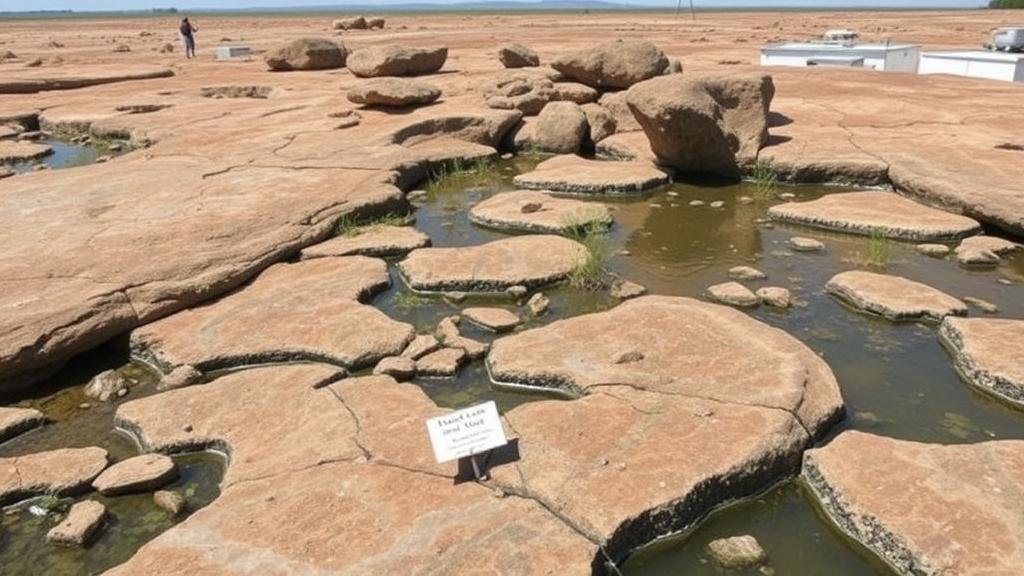Petrified Marshlands: Fossilized Plant Communities Preserved in Stone
Petrified Marshlands: Fossilized Plant Communities Preserved in Stone
Petrified marshlands represent unique geological formations where ancient plant communities were preserved in stone, providing invaluable insights into prehistoric ecosystems. The transformation of organic material into fossilized forms occurs through a process known as permineralization, which involves the gradual replacement of organic material with minerals. In particular, silica, calcite, and iron can infiltrate plant tissues, capturing their details down to the cellular level. For rockhounds and mineral collectors, these sites are not only a treasure trove of specimens but also an opportunity to understand Earth’s history through its fossilized flora.
The Science Behind Petrification
Petrification involves several key processes that enable the preservation of marshland vegetation. Initially, organic materials must be buried under sediment, inhibiting decay. Over millions of years, mineral-laden water permeates the tissues of the plants. As the organic material decays, it is replaced with minerals, resulting in a stone-like replica of the original structure. This process can take thousands to millions of years, depending on environmental conditions.
One fascinating example is that of the silica-rich environments where ancient ferns and cycads once flourished. In these settings, petrified remains can produce detailed structures, allowing for precise identification of species.
Petrified marshlands can be found in various locations across the globe, each showcasing unique fossilized plant communities. Some notable locations include:
- The Petrified Forest National Park in Arizona, USA: Home to one of the largest concentrations of petrified wood in the world, featuring logs from ancient conifer trees.
- The Petrified Wood State Park in Kansas, USA: Offers a range of petrified plant specimens, including small ferns and wood.
- Lesvos Petrified Forest in Greece: Preserves a vast range of fossilized trees, with some dating back approximately 20 million years.
Common Types of Fossilized Plants
Among the most commonly found fossilized plants in petrified marshlands are:
- Petrified Wood: Often resembling normal wood but with a stone-like appearance, this form is typically found in logs and tree stumps.
- Leaf Impressions: These occur when a leaf leaves an impression on sediment, capturing its detail before being permineralized.
- Root Systems: Preserved root structures provide insight into the growth patterns and ecosystems of ancient plants.
Collecting Petrified Fossils: Tips and Techniques
For rockhounds and mineral collectors, collecting petrified plant materials can be a rewarding endeavor. Here are some practical tips to maximize your experience:
Know the Legalities
Before embarking on your collecting journey, it is crucial to understand the regulations regarding fossil collection. Many national and state parks prohibit the removal of petrified remains. Always check local regulations and obtain necessary permissions if collecting on private land.
Field Techniques
When on site, consider using tools such as:
- Handheld Rock Hammer: Ideal for carefully extracting smaller specimens without damaging them.
- Picking Tools: Useful for digging out fossils lodged in rocky sediments.
- Brushes: To clean off dirt and debris from your finds, allowing you to view and assess the fossil more clearly.
Preservation of Finds
After collecting fossils, it’s important to take steps to preserve them properly. Use soft cloths to clean the specimens, avoiding harsh chemicals that may damage fossilized materials. Store your specimens in a stable environment to prevent moisture damage, which can lead to degradation over time.
Conclusion: Embracing the Journey of Discovery
Petrified marshlands offer an extraordinary glimpse into our planet’s ancient past, making them invaluable to rockhounds and mineral collectors. Beyond their aesthetic appeal, these sites serve as living laboratories where amateur and professional enthusiasts alike can study ancient ecosystems and geological processes. By understanding the science of petrification, knowing where to find these treasures, respecting legal regulations, and practicing responsible collecting, you can become part of the ongoing narrative of Earth’s fascinating history. Nurture your curiosity, and embrace the journey of discovery within the stony remains of ancient marshlands.



